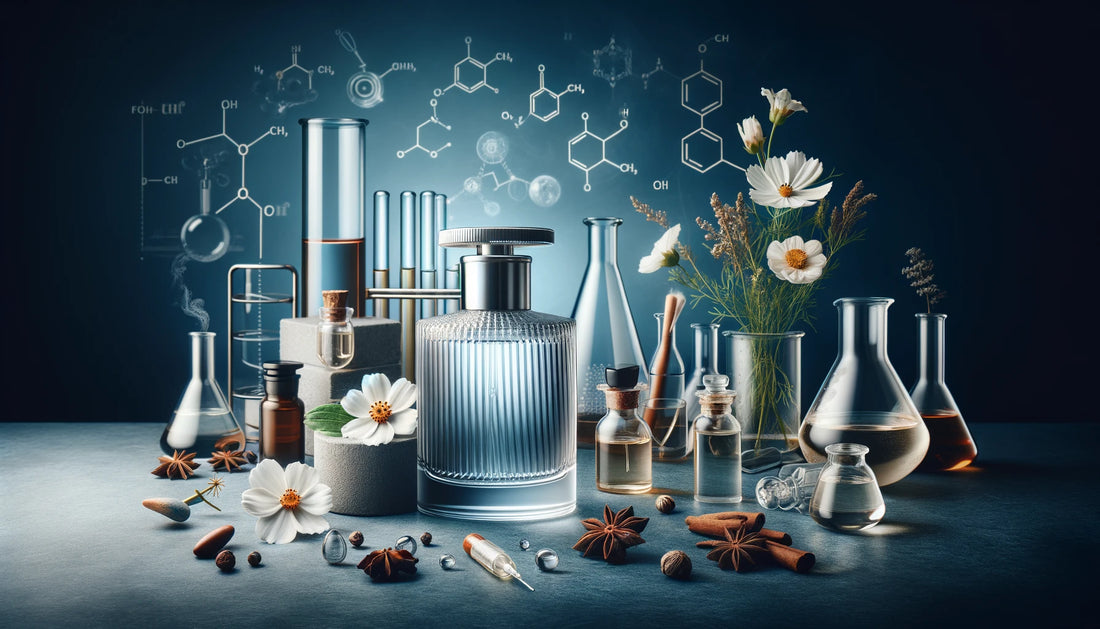
The science behind perfume: An in-depth exploration
Share
Explore the complex science behind the creation of perfume. From the art of extraction to the chemistry of scents and the impact on our senses, discover everything in this in-depth guide.
Perfume
Ah, perfume! A touch of mystery, a cloud of beauty, wrapped in an essence that takes us to other worlds, times and memories. But have you ever thought about what lies behind those enchanting scents? It's not just art; there is a whole science behind perfume waiting to be unraveled. In this blog we dive deep into the scientific principles behind perfume creation. We explore the extensive extraction methods of fragrance ingredients, the crucial role of chemistry in developing scents, and how our nose and brain perceive them. We also take a look at innovations in the perfume industry, including synthetic fragrance ingredients and sustainability practices. In short, we highlight all facets in detail, so that this blog can become a reference work for anyone interested in the wonderful world of perfume. Are you ready to delve into the science behind perfume?
Extensive extraction methods of fragrance ingredients
The magic of perfume begins with the extraction of fragrance ingredients, a process that captures the essence of natural sources. This is the first step in the journey from raw materials to the refined scents we know and love. Each extraction method contributes to the perfume's unique complexity and depth.
- Distillation : Distillation uses heat and steam to extract essential oils from plant material. This process can capture the most volatile compounds, but there is a risk of delicate scents being lost to the heat. Interestingly, the quality of the water and the duration of distillation can have a profound effect on the character of the extracts.
- Solvent extraction : This method uses solvents such as hexane or ethanol to extract fragrances from plant material, creating a concentrated 'absolute'. The ability of this technique to extract almost all the odorous molecules from the plant material without altering its structure makes it ideal for capturing the full essence of the odor source.
- Enfleurage : Enfleurage is a time-consuming and labor-intensive process that is especially suitable for flowers that lose their scent when heated. The flowers are placed on layers of fat, which absorb the scent. This fat is then washed with alcohol to isolate the scented oil, a process that can capture the most delicate and complex aromas.
- CO2 extraction : This modern technique uses supercritical carbon dioxide under high pressure to extract fragrances without the heat required for traditional distillation. The result is a highly pure extract that can capture even the most volatile odors without chemical changes, making it ideal for creating very true-to-life fragrances.
Chemical compositions and the creation of scent
The alchemy of perfume is a delicate balance of science and art. The combination of different scent molecules creates a symphony of scents, each with its own character and emotion. Molecular interactions play a central role here, with chemists experimenting with combinations to create unique and harmonious odor profiles. The stability and shelf life of these fragrances are also essential, with factors such as light, heat, and air can affect the integrity of a perfume. By using antioxidants and fixatives, perfumers can extend the life of their creations, so that the scent you spray today will still retain its beauty tomorrow.
In-depth analysis of perfume perception
How we perceive perfume is a complex interplay between our nose, brain, and emotions. The olfactory receptors in our nose are able to detect a wide range of odor molecules, which then send signals to our brain. This interaction can evoke deep emotional responses, from calming to stimulating, and can even bring back old memories. The psychological effects of perfume make it a powerful tool for personal expression and influencing mood and behavior.
Future-oriented innovations in the perfume industry
The perfume industry continues to evolve, driven by innovations in biotechnology and a growing awareness of sustainability and ethics. Genetic engineering offers new possibilities for creating fragrance molecules, while the industry also focuses on protecting endangered species and reducing its ecological footprint. This progress promises a future where perfume not only stimulates our senses, but also respects our planet.